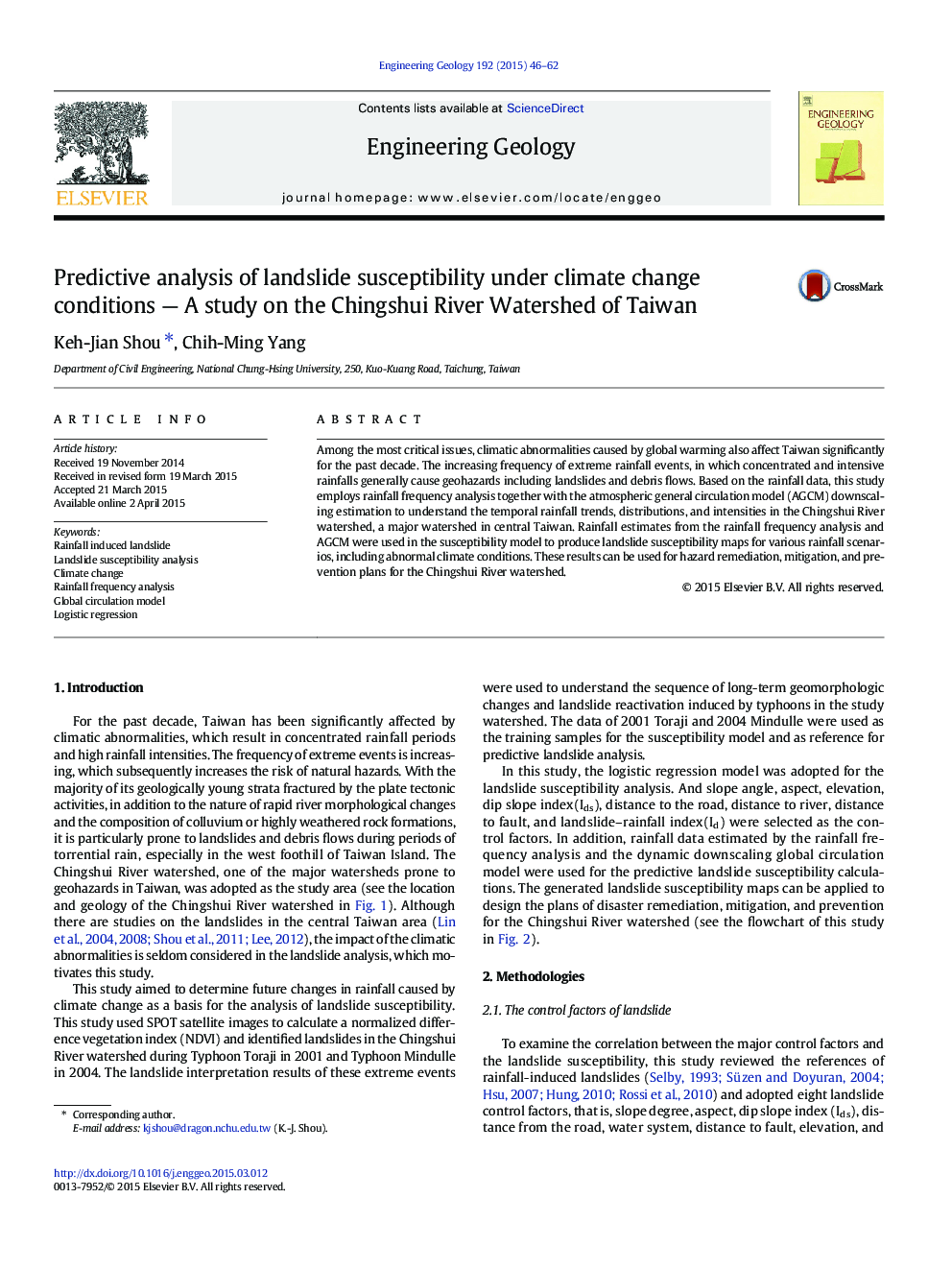| Article ID | Journal | Published Year | Pages | File Type |
|---|---|---|---|---|
| 4743264 | Engineering Geology | 2015 | 17 Pages |
•Rainfall was predicted by rainfall frequency analysis.•Rainfall was predicted by the atmospheric general circulation model (AGCM).•The Chingshui River watershed, a major watershed in central Taiwan, was studied.•Landslide susceptibility was obtained for various predictive rainfall scenarios.•The predictive landslide susceptibility maps can be used for hazard mitigation.
Among the most critical issues, climatic abnormalities caused by global warming also affect Taiwan significantly for the past decade. The increasing frequency of extreme rainfall events, in which concentrated and intensive rainfalls generally cause geohazards including landslides and debris flows. Based on the rainfall data, this study employs rainfall frequency analysis together with the atmospheric general circulation model (AGCM) downscaling estimation to understand the temporal rainfall trends, distributions, and intensities in the Chingshui River watershed, a major watershed in central Taiwan. Rainfall estimates from the rainfall frequency analysis and AGCM were used in the susceptibility model to produce landslide susceptibility maps for various rainfall scenarios, including abnormal climate conditions. These results can be used for hazard remediation, mitigation, and prevention plans for the Chingshui River watershed.
